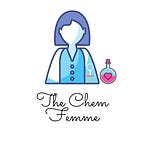As mentioned in the previous post, preliminary tests act as a base of qualitative analysis. In this step, the physical characteristics of the organic compounds are observed.The various tests are,
Colour
Small organic compounds are usually colourless. The colour in organic compound is due to the presence of a group called a chromophore.This group plays an essential part when we study the Ultra- violet spectra of organic compounds.
Odour
Certain functional groups show a characteristic odour. This can help us gauge the type of functional group present in the organic compound. For example, esters give off a fruity odour.
State
Compounds can be either solid or liquid.
When the compound looks like talcum powder, it is an amorphous solid. Whereas, when the crystals are defined, it is considered crystalline.
The basic difference between the two is the molecular arrangement. When the molecules are arranged in a proper order it is a crystalline solid. Whereas, when there is no order in the molecular arrangement, it is an amorphous solid.
Ignition Test
This test lets us know if a particular compound is aromatic or aliphatic. Aromatic compounds when exposed to direct flame give off soot whereas aliphatic compounds do not give off soot.
Solubility
In the qualitative analysis of inorganic compounds, solubility is helpful for the identification of cations. Similarly, solubility is a very important test that helps in the identification of a functional group. Like cations, functional groups are classified based on their solubility as
- Strong acid
- Weak acid
- Base
- Neutrals
- Polynuclear aromatic and halogenated hydrocarbons
- Miscellaneous
Test of solubility is done using six different solvents.
Water and Ether
All the classes except for the sixth are insoluble in water and soluble in ether because they follow the basic principle of like dissolves like. Water is a polar solvent whereas ether is less polar than water. This is why most of the organic compounds are soluble in ether.
In case of the miscellaneous class, they are soluble because the solvent used for the solutions (5% NaHCO₃, NaOH, dil. HCl) is water.
5% Sodium Bicarbonate and 5% Sodium Hydroxide
Sodium hydroxide is a strong base whereas sodium bicarbonate is a weak base. A compound dissolves in sodium bicarbonate if it is a strong acid as a neutralisation reaction takes place leading to the formation of sodium salt of the acid.
Strong and weak acid are soluble in the strong base ,i.e., Sodium hydroxide. Bases on the other hand are insoluble in NaOH. They don’t undergo reaction which in turn makes them insoluble.
Dilute Hydrochloric acid
Bases(Amines) are soluble in the dilute acid. This happens because ammonium salt is formed almost instantaneously after the reaction of amine with the dilute acid.
Concentrated Sulphuric Acid
All the classes except for the polynuclear aromatic and halogenated hydrocarbons are soluble in this solvent.
Polynuclear and aromatic halo hydrocarbons also come under the neutral class. The main difference is the solubility in concentrated sulphuric acid.
